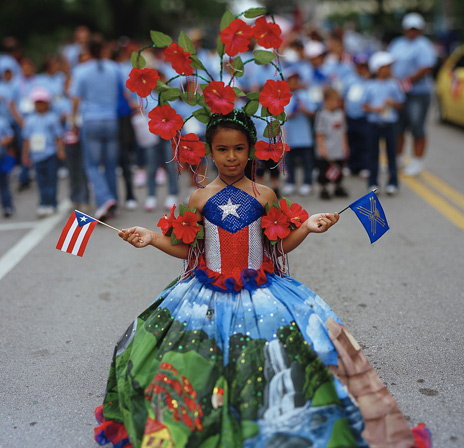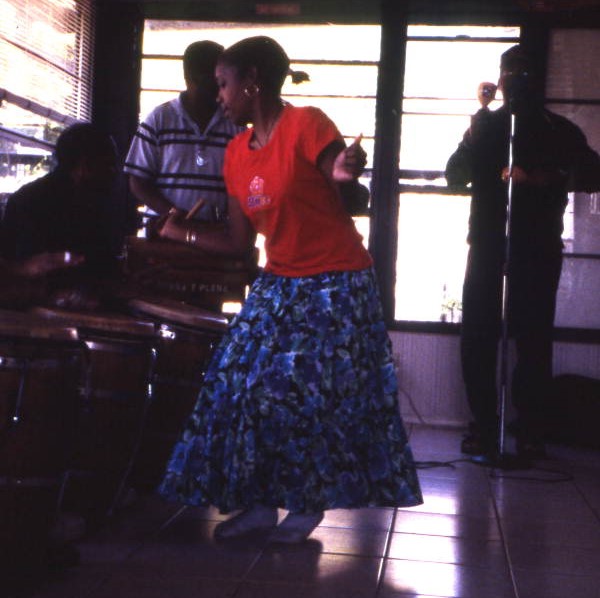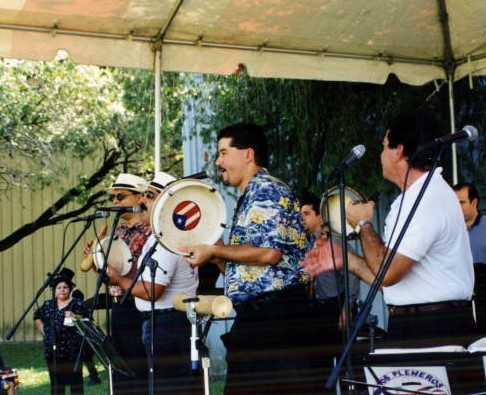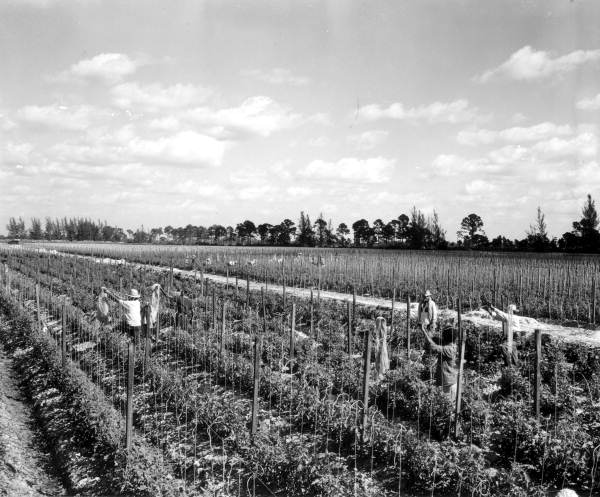" Like Puerto Rico, Florida’s history begins under the imperial rule of Spain.
Shortly after Juan Ponce de Léon’s conquest of Puerto Rico in 1507, the Spaniard
became the island’s governor in 1509. In 1512, de Leon’s quest for gold and a fountain
of waters believed to restore youth took him from Puerto Rico to what he believed was
the island of Bimini. Instead, de Léon made landfall on what turned out to be the Florida
shoreline, thus beginning 300 years of Spanish rule. Florida, like Puerto Rico, eventually
became a part of the United States after Spain ceded the territory to the American
government, subsequently becoming a state in 1845. In short, Florida’s past has
always been one of association with Spanish-speaking peoples. 1
The rise of Florida’s multicultural population has generally been attributed to the
massive migrations of Cuban exiles since 1959, but Florida’s immigration history has
deeper roots. During Reconstruction, vast acreages of underdeveloped land and the
need for resourceful settlers prompted the creation of the Florida Bureau of Immigration.
Although short-lived, the Bureau managed to encourage the immigration of various
groups who still have an impact on Florida today. Florida’s first Hispanic immigrants
arrived between 1885 and 1924, as Cubans, Italians, and Spaniards came to what
would become Ybor City near Tampa. They made the city into the nation’s leading
center for the production of high-quality cigars. Ybor City flourished as its inhabitants
created a rich associational life with labor unions, foreign language newspapers, ethnic
and fraternal clubs, and political organizations.2
The success of Fidel Castro’s Cuban Revolution in 1959 again altered Florida’s
demography. The Revolution spurred an influx of Cuban immigration into Florida and
had a remarkable economic, political, and social impact in South Florida that ushered in
a pattern of Hispanic migration that has been the trend in Florida for the last 40 years.
Labeled the “Latinazation of Florida,” Hispanic immigration, once synonymous with the
exodus of Cuban exiles, now includes Puerto Ricans, Mexicans, and other immigrants
from Central and South America and has moved well beyond South Florida to other
large metropolitan areas including Orlando in Central Florida.3
As with many regions in Florida, Central Florida is emerging as an area for
migration of various ethnic groups. Following statewide trends, Central Florida’s
Hispanic population is steadily increasing in numbers and influence and now includes
significant numbers of Cubans, Puerto Ricans, Mexicans, and Colombians within its
borders. But, it is the Puerto Rican migration to Central Florida that has made the
greatest impact. Although Florida is witnessing its greatest influx of Puerto Ricans
today, Puerto Ricans have been making their way to the state for over 60 years.
"
Source:
Cynthia Melendez.(2007)"The Emergence Of Central Florida's Puerto Rican Community"
Published by: University of Central Florida (STARS)
https://stars.library.ucf.edu/cgi/viewcontent.cgi?article=4263&context=etd











